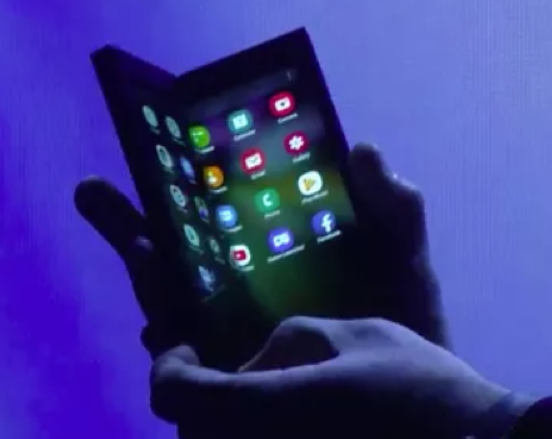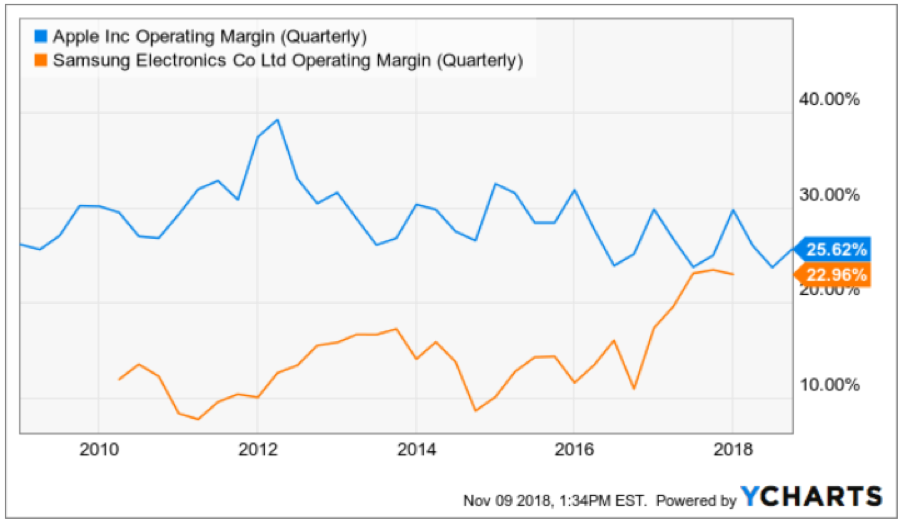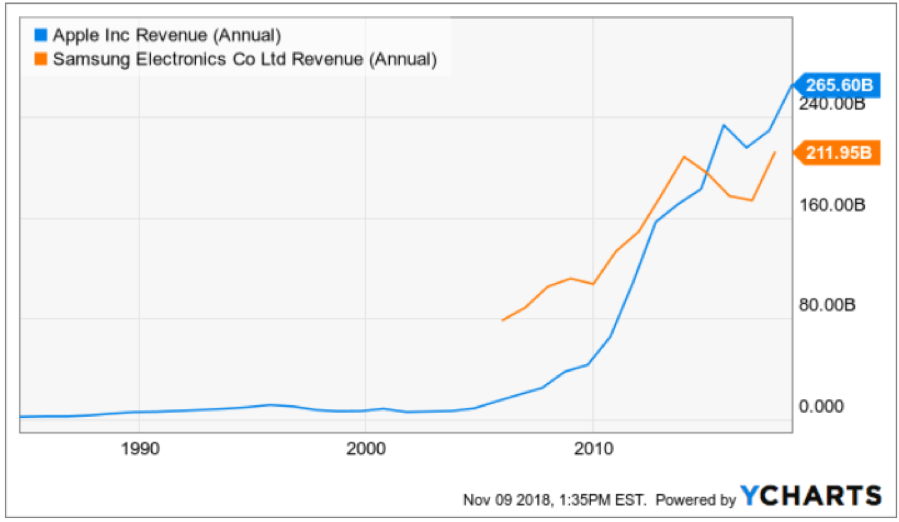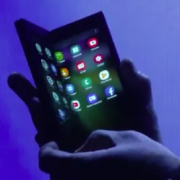I’m unimpressed.
The Samsung (SSNGY) Galaxy F foldable smartphone will be a complete failure just like the Google Glass.
Heralding this product as the new disruptor ready to displace the Apple (AAPL) iPhone is a bunch of garbage.
Yes, Korean stalwart Samsung did achieve success with their flagship smartphone device the Samsung Galaxy which took 6 years to produce. But don’t expect anything similar in terms of sales and scale of adoption.
This will be a dud.
I will outline some of the problems creating a foldable smartphone for mass use.
In fact, why not call a laptop a “foldable smartphone”? I routinely wield my Google (GOOGL) Voice and Skype to call my Rolodex of phone numbers around the world from my computer and my laptop definitely folds!
This smells like desperation from Samsung who has grossly miscalculated gimmicky innovation coining it as a true gamechanger.
Illogically, the act of folding creates a second layer that will result in a bulky product. Logically, it makes sense to have one layer and one layer only.
The sleek smartphones of today are trending towards becoming A2 paper thin and lugging around a brick is not what contemporary-minded netizens had in mind.
Naturally, each future iteration will gradually solve this problem just like Moore’s law observes that the number of transistors in a dense integrated circuit doubles about every two years, meaning you can pack more components into a product over time.
But will there be a second version of this foldable phone?
And then manufacturers must keep in mind which addressable market could this foldable device disrupt. Will it replace the smartphone or the tablet?
Smartphone screens have become bigger with each generation eroding the share and application of the tablet once the smartphone eclipsed the 6-inch screen size.
The tablet industry has suffered since with smartphone enhancements only adding to the misery. This is all evident in this year’s tablet sales down 5.4% YOY through September.
If this foldable phone is pigeonholed as a replaceable tablet product, then sales would address a niche market product at best and have a higher chance of being an outsized flop.
No matter how you cut it up, iPhone users won’t gravitate towards this gimmicky device and chuck their iPhones in the bin.
Cost is also a big factor in this type of product because of the capital thrown at it by Samsung.
They no doubt hope to recoup some of the exorbitant R&D that went into building a brand-new product from scratch.
Rumors floating around the Samsung developer conference pin this foldable phone at a retail price of around $2000.
With this high of price point, I would expect the phone to fly out of my pocket by itself and fold out without me physically doing anything or something similarly impressive.
I highly doubt that Samsung can pull off something that innovative.
The nature of Apple producing brilliant smartphones is that to topple the iPhone, something special is needed to clearly surpass the predecessor along with a must have “it” factor.
That is what you got with the hoards of customers camping overnight in a tent outside of Apple stores dotted around the world waiting to be the first to buy the next version of the iPhone.
That type of pandemonium and hoopla surrounding a consumer product hasn’t been replicated since the days of Steve Jobs.
In general, customers want convenience and the arduous nature of folding out a phone will become tedious in actual reality because most phone users have the propensity to check their phone 15 times per hour.
That also means folding out a phone 15 times per hour and that doesn’t dovetail well with most phone users who, as of now, just slip their phone in and out of a coat or trouser pocket ready in half a second to navigate the e-world.
In short, this device isn’t practical and the targeted market who has the cash to pay for this will dislike the inconvenience of the application.
The user experience is demonstrably inferior to the Apple iPhone.
On the surface, the Galaxy F phone looks innovative and the adaptable nature of the foldable screen is a novelty, but Samsung will have to go back to the drawing board on this one.
I incessantly drum up the issue of the lack of visionaries at the helm of tech companies. The number can be counted on one hand, maybe two.
The type of class where you find the Jack Dorsey and Elon Musk level of visionaries is not a dime a dozen.
When you have a lack of vision, consumers get foldable phones.
Forcibly wedging in hyper-charged display technology into a smartphone is a recipe for disaster.
Maybe someday this technology can be more relevantly applied to a consumer product, but this Frankenstein type product is a mix of two sets of technologies not meant to marry each other.
The act of intent is of equal importance.
The bigger takeaway from this fanciful experiment is that the next wave of innovation to replace the smartphone is in full swing and happening as we speak.
Even though Samsung’s Hail Mary pass looking for that elusive last-second touchdown on the last heave of the game will be a bust. It is only a matter of time before another Steve Job’s lookalike hits the jackpot with the perfect consumer device wooing the billions starting another cult-like phenomenon.
In the next 10 years, display technology will be completely revolutionized adorning our megacities and billboards in ways we never imagined.
This is all just the beginning and filtering out the right formula is what we see taking place from all these tech companies determined to become the king of the jungle.
All of this foldable display technology reverts back to one constant desire – the demand for larger screens.
The 6-inch smartphone was the first baby step to something brilliant.
But ultimately, producing a digital device that can easily fit into our pocket, instantaneously ready for action, possessing beautiful optics with the largest screen possible is the eventual chosen one who will win this sweepstake.
And the first company that can figure out how to get the phone out of our pockets, in front of our eyes without the need for human fingers will have the inside track to revolutionize the world.
We are not there yet, but we are inching closer every day because of the hyper-accelerating rate of technology.
Waiting in the queue are Samsung’s biggest rivals looking to enter the foldable phone market such as Huawei, LG, Lenovo, and many other Chinese Android manufacturers.
There have been whispers that Apple has had some patents filed for foldable technology. And with Sir Jonathan Paul Ive, the Chief Design Officer of Apple, a remarkably special talent designing Apple’s revolutionary products, he certainly has something special to offer hidden up his sleeves.
He always does.







